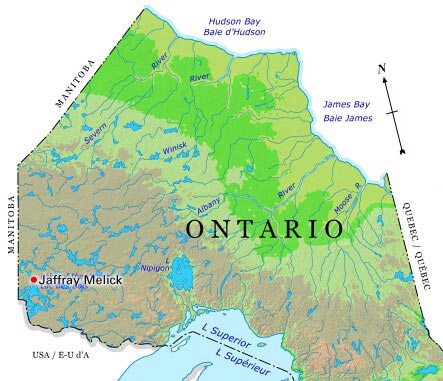Kenora, Ontario, incorporated as a city in 2000, population 14,967 (2021 census), 15,096 (2016 census). The city of Kenora is located on Lake of the Woods, 50 km east of the Manitoba border. The city is the result of the amalgamation of three former towns, Kenora (incorporated 1892), Jaffray Melick (incorporated 1988) and Keewatin (incorporated 1908).
Settlement
Kenora is located on the traditional territory of the Ojibwe. Among the earliest Europeans in the Lake of the Woods area was explorer and fur trader Pierre Gaultier de Varennes et de La Vérendrye.A party led by La Vérendrye built Fort Saint-Charles on the northwest arm of the lake (in what is now Minnesota) in 1732.
The current site of Kenora was incorporated as the Manitoba town of Rat Portage in 1882 during a boundary dispute with Ontario. Ten years later, Rat Portage was incorporated under Ontario law. The town was renamed Kenora in 1905. The name derives from Keewatin, Norman and Rat Portage, interdependent communities that were clustered where the lake spills into the Winnipeg River.
Development and Economy
Kenora’s scenic location on a major international waterway determined its growth patterns. The Ojibwe’s traditional dependence on fish andwild ricecontinued through thefur tradeera. Around 1836, the Hudson’s Bay Company established a trading post next to what is now Kenora.
Construction of the Canadian Pacific Railway beginning about 1880 brought lumbering, steamships, gold mining, fisheries, hydroelectric development and flour milling. By the mid-20th century, seaplanes and the Trans-Canada Highway swelled summer traffic. Kenora’s economy is based on health care, public services, tourism, construction, manufacturing and lumber and wood industries. Cottagers — many from nearby Manitoba and the midwestern United States — double Kenora’s summer population. Neighbouring reserves are home to a significant Ojibwe population (see Wauzhushk Onigum Nation).

 Share on Facebook
Share on Facebook Share on X
Share on X Share by Email
Share by Email Share on Google Classroom
Share on Google Classroom











